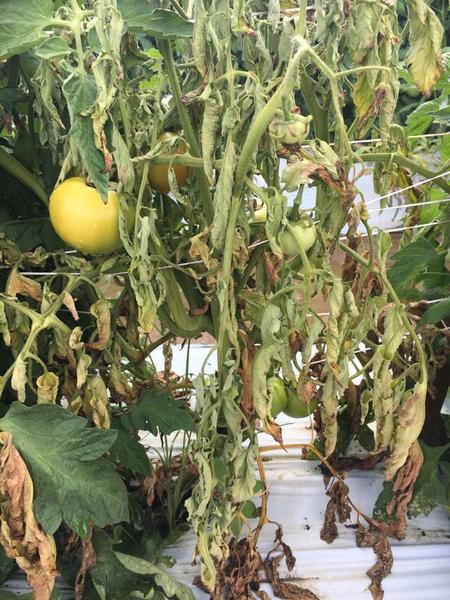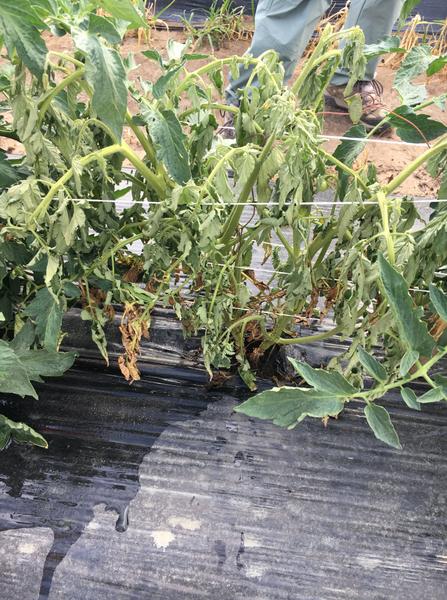Southern Blight of Tomato and Pepper
go.ncsu.edu/readext?579152
en Español / em Português
El inglés es el idioma de control de esta página. En la medida en que haya algún conflicto entre la traducción al inglés y la traducción, el inglés prevalece.
Al hacer clic en el enlace de traducción se activa un servicio de traducción gratuito para convertir la página al español. Al igual que con cualquier traducción por Internet, la conversión no es sensible al contexto y puede que no traduzca el texto en su significado original. NC State Extension no garantiza la exactitud del texto traducido. Por favor, tenga en cuenta que algunas aplicaciones y/o servicios pueden no funcionar como se espera cuando se traducen.
Português
Inglês é o idioma de controle desta página. Na medida que haja algum conflito entre o texto original em Inglês e a tradução, o Inglês prevalece.
Ao clicar no link de tradução, um serviço gratuito de tradução será ativado para converter a página para o Português. Como em qualquer tradução pela internet, a conversão não é sensivel ao contexto e pode não ocorrer a tradução para o significado orginal. O serviço de Extensão da Carolina do Norte (NC State Extension) não garante a exatidão do texto traduzido. Por favor, observe que algumas funções ou serviços podem não funcionar como esperado após a tradução.
English
English is the controlling language of this page. To the extent there is any conflict between the English text and the translation, English controls.
Clicking on the translation link activates a free translation service to convert the page to Spanish. As with any Internet translation, the conversion is not context-sensitive and may not translate the text to its original meaning. NC State Extension does not guarantee the accuracy of the translated text. Please note that some applications and/or services may not function as expected when translated.
Collapse ▲Inga Meadows, Amanda Scherer, and Michelle Henson | 1/17/2019 | NC State University
Southern blight, also known as southern wilt and southern stem rot, is a serious and frequent disease of vegetable crops in North Carolina. The disease was first reported on tomato but also occurs on hundreds of other economically important crops including pepper, bean, cantaloupe, carrot, potato, sweet potato, watermelon, cotton, peanut, tobacco, and soybean. High temperatures (77 to 95°F), aerobic and moist conditions, and acidic soil favor disease development. In North Carolina, the disease will first appear in “hot spots” in fields in early to mid-summer and progress until cooler, dryer conditions prevail.
Southern blight is caused by the soil-borne fungus Athelia rolfsii (=Sclerotium rolfsii). For more information on Southern blight including signs and symptoms and disease management, view the entire publication.

Field-grown tomato plant affected by southern blight. Photo courtesy of A. Strayer-Scherer.

Field-grown tomato plant affected by southern blight. Photo courtesy of A. Strayer-Scherer.


